The Sanskrit word “sundara” means “beautiful”. HiFiMAN’s latest models are all named after some Sanskrit word, but this one appears to be spot on. The HiFiMAN Sundara are in fact beautiful headphones, though more importantly they sound good.
Disclaimer: I got this unit on loan from HiFiMAN as part of a review tour. I gave it to the next person in queue after trying it. Additional information is available on HiFIMAN’s website. The HiFiMAN Sundara retails for $349.
TL;DR: recap
| Pros |
Cons |
| Very well built with premium materials
Comfortable even in longer listening sessions Relatively balanced tuning Good technical ability |
Stock cable could be better
Treble might be more abundant than some would like |
Rating: 8.3/10
Packaging & Accessories
The HiFiMAN Sundara comes in a simple box which looks unassuming on the outside, but is rather rich on the inside. The inside has in fact a lot of padding with some satin-like fabric covering the moulded foam. The headphones rest in a pre-cut place which holds them tightly and securely. There’s a small space cut out of the foam for the cable, plus a few leaflets including a manual. Alas there is no case, which is a missed opportunity.
Also, I forgot to take pictures of the box, so my description will have to suffice.
Design & Comfort
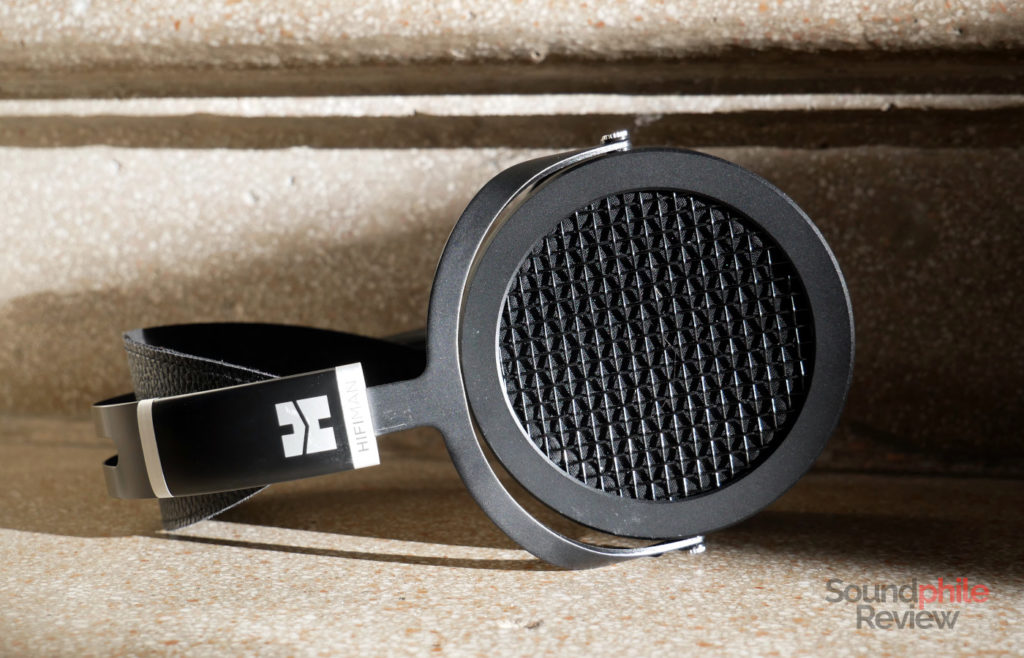
The Sundara belong to the new course of HiFiMAN design: whereas the previous models were equipped with a fixed metallic frame with a moving headband, the new headphones use a fixed headband with the frame that extends. It’s a mix of the usual headband design, with the cups that extend out of it, and the suspended headband design. I was sceptical at first – I found the previous design to be as good as it gets – but after trying the Sundara I had to make up my mind. Not only is the design lighter and more appealing, but it’s also as functional and comfortable as before. Some people may find it even better.
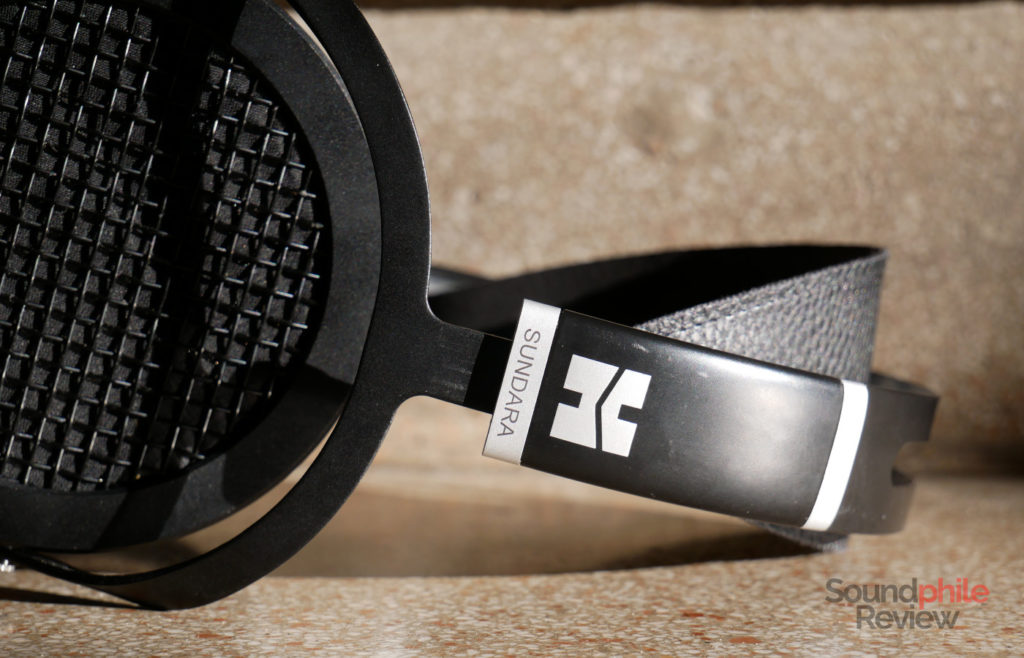
The main change is however the fact that you now have to extend the headband. Due to a very strong grip you can’t do this while wearing the headphones and you have to take them off and adjust them with both hands. That’s alas not ideal. Nor is the fact that this mechanism is stiff because the metal parts press hard against each other, causing scuff marks to appear over time as one adjusts the headphones multiple times. A somewhat easier, softer mechanism would be greatly appreciated.
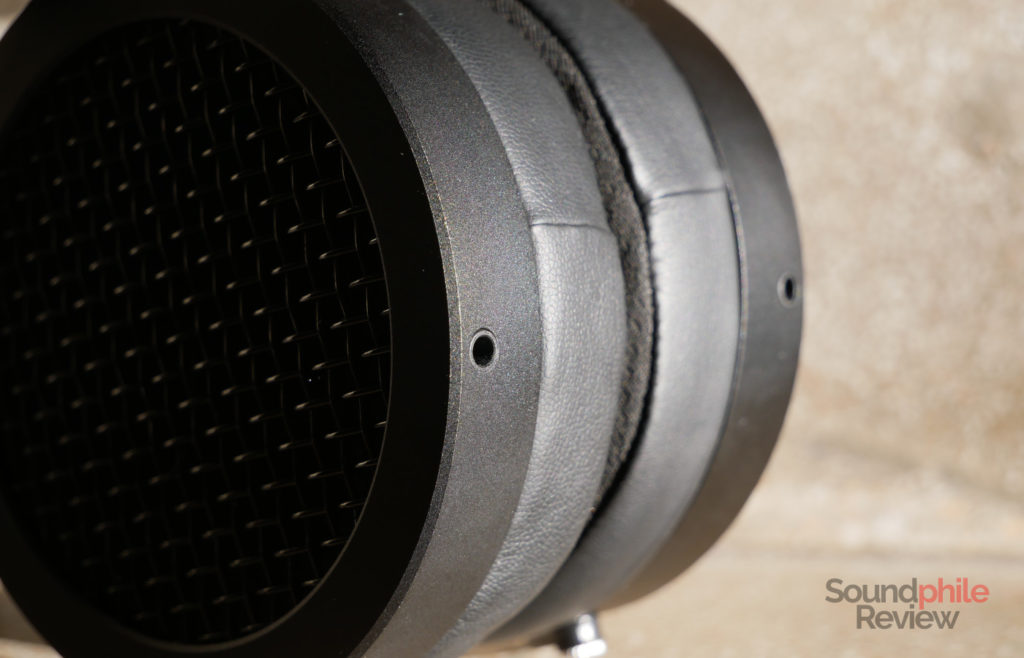
HiFiMAN also went from metal, plastic and wood builds to almost entirely metal builds, with just details being made of plastic. The HiFiMAN Sundara are made of metal (aluminium, it seems) with just the two ends of the headband being made of plastic. Everything else, including the yokes and gimbals, are metal, so the Sundara should be quite durable.
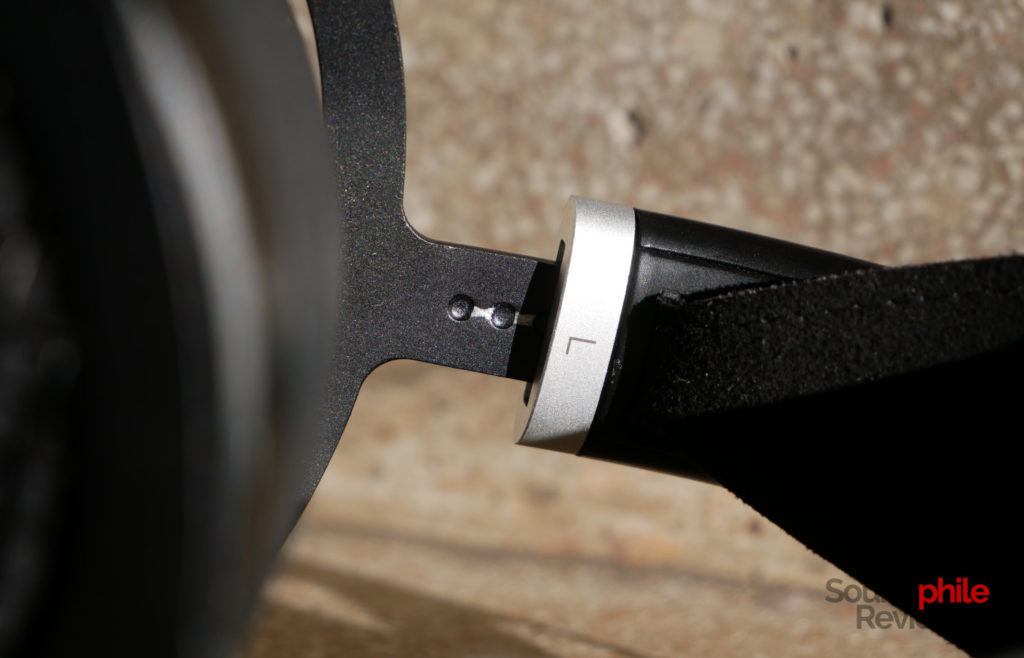
There are lots of people who have expressed their concern over HiFiMAN build quality and for good reason: the company has had many issues with their products in the recent past. The Sundara seem to be quite good, though: the unit I got had apparently been used by lots of people and was a bit worn out due to this, but it still was in good overall shape and I had no doubt as to their build quality. The main pain points of previous models, such as the gimbals cracking, were eliminated by the new design and the new materials. I’m confident enough they can be long-lasting, if not abused.
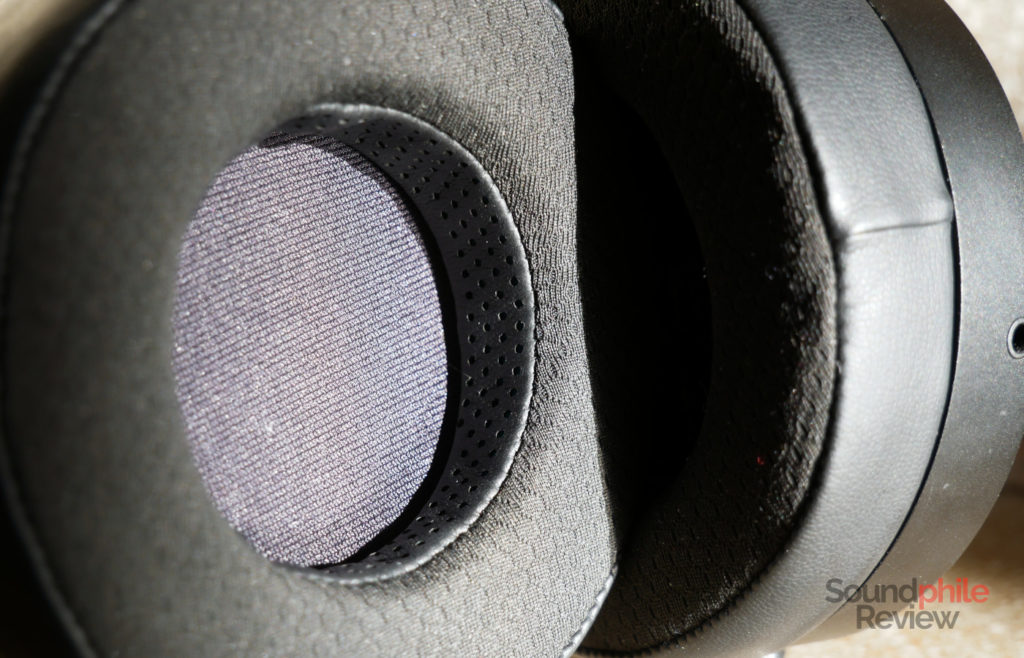
I have had a pair of HE-560 for quite a while now and I’ve always felt like it was one of the most comfortable headphones I’ve ever tried. The Sundara are not as comfortable, but they’re really close. HiFiMAN manages to create very comfortable headphones thanks to a suspended headband design that uses a soft headband with some padding. The reason why the HE-560 are more comfortable is that they have a bit more padding and a larger headband, so the weight is better distributed. They also tend to press on the ears more with the earcups, so a bit of weight is lifted off the top of the head. Sorry, this is the Sundara review. So, the Sundara are pretty comfortable, so much so that even with my scalp being hyper-irritated (a situation which alas happens more often than I’d like) they do not cause any discomfort for more than half an hour, which is quite remarkable.
Isolation is, obviously, non-existent: the HiFiMAN Sundara are open-back headphones, so they’re not meant to provide any isolation.
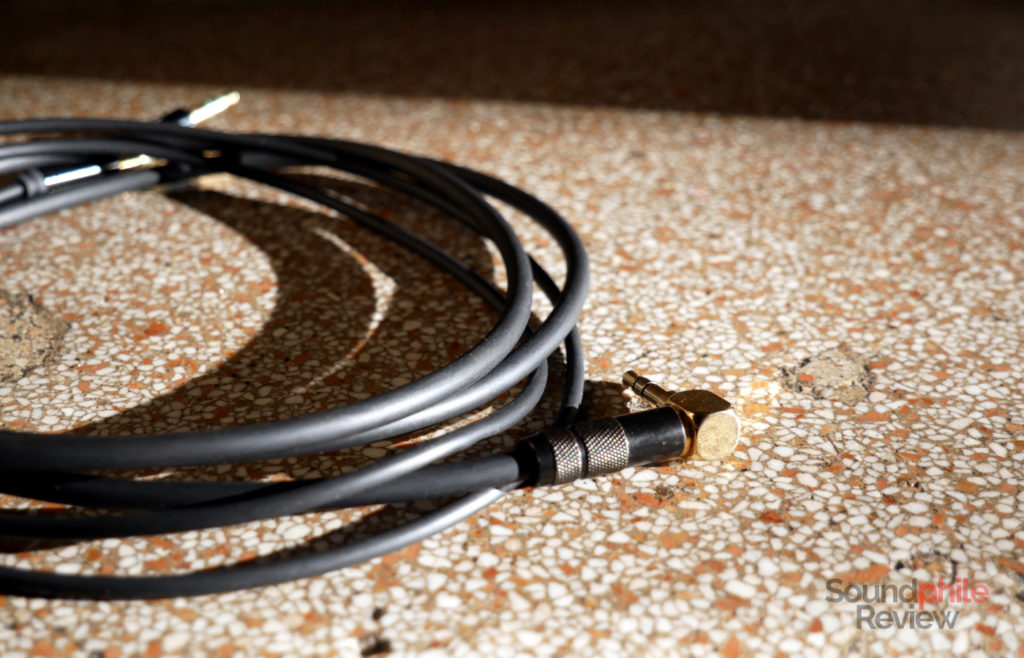
The cable has 3.5 mm jacks at both ends: a single right-angled jack on the end which goes in the amplifier and two jacks that go inside the earcups. This also means that I could not use the 2.5 mm cables I have for the HE-560 to test the Sundara. Compatibility issues aside, the Sundara’s cable is relatively thick and covered in rubbery plastic. I don’t know if that’s a result of this unit having been used by so many people during the tour, but it just tends to curl up which is not exactly ideal, especially if you use it while at a desk. It also appears pretty beat up and prone to kinks, so a better cable is probably warranted.
Sound & Specs
I listened to the HiFiMAN Sundara using a variety of gear. Among them an iFi nano iDSD Black Label, a Topping DX7 driving a Drop THX AAA 789, a HiBy R5 and a Lindemann Limetree Network. In any case the source files were the same FLACs, mostly in 16 bit – 44.1 kHz.
HiFiMAN Sundara |
| Frequency response | 6 – 75,000 Hz |
| Impedance | 37 Ω |
| Sensitivity | 94 dB |
The HiFiMAN Sundara are relatively efficient headphones, at least as far as planar designs go. They can be powered with practically anything, unless you really want to blow your eardrums. Using the THX AAA 789, I can use them at a fairly high volume by using the lowest gain with the knob at 8 o’clock.
I would describe the general tuning as moderately bright. This is due to some emphasis on upper midrange and treble more than lack of bass, which extends to reasonable depth. This tuning is in line with previous HiFiMAN headphones, so it’s not surprising to find it here again.
The Sundara have a moderately wide soundstage, with more lateral extension than depth. It sounds as if the instruments were close to the listener but played in a large room. Imaging is good in terms of positioning the instruments on the stage, as each has its own clear spot, but it fails in creating the impression that the sound comes from outside the head – most tracks sound as if the sound came from between the ears. The instruments are very well separated from each other, even in more crowded tracks.
As one would expect out of a planar driver, the HiFiMAN Sundara offer deep, physical bass. It doesn’t extend to the lowest depths with the same weight of mid-bass, but it does reach ~40 Hz with good presence and then rolls off going further down. Bass is detailed and well textured, with various layers being presented coherently and without significant negative interactions between them. Control is such that bass never gets in the way and never covers the mids, instead offering a solid foundation for those to lay upon. There are probably more lows than when an ideally neutral signature would have, but not by a large margin. In fact tracks such as Gaia Cuatro’s Coya have strong bass which is however never in the spotlight and acts as a side dish.
Midrange is the real star of the Sundara and it is presented with a slight accent on the upper region which gives it added clarity and sparkle. Violins, trumpets and female voices shine, but not to the detriment of other, “warmer” instruments which sound as good as them. This bit of emphasis makes some details pop up more than others: the vibrations of guitar strings, the air moving inside trumpets and flutes, or the small fluctuations of the harmonica (e.g. in Max De Aloe Quartet’s L’aria in mezzo). Tonality is approaching neutrality with a touch of brightness, which many find ideal. The Sundara offer great clarity that goes hand-in-hand with the good amount of detail that the driver offers.
There’s some emphasis on treble which is mostly concentrated between the lower area and the middle one; this, together with the good extension, gives treble a primary role in the scene. Treble is in fact forward in the mix, up to the point that the overall signature is bright. This emphasis is however devoid of peaks, so it is not fatiguing or harsh. The aforementioned extension makes treble airy and sparkly enough. The level of detail is rather good and one can even hear some micro-details, though those are an exception more than the norm.
HiFiMAN Sundara Comparisons
Here are some comparisons with other headphones:
- HiFiMAN Sundara vs HiFiMAN HE-560: the HE-560 are a more balanced version of the Sundara. Bass is more extended and a bit more present, but it stays out of the way in the same way. It’s a bit faster and more detailed, but it has less physical impact. Midrange is more balanced, though it still is slightly bright; it’s a bit more detailed. Treble is much less emphasised, so it is much less fatiguing than the Sundara’s while also being a bit more airy. In general, the HE-560 are more detailed and more neutral than the Sundara. They also offer a similarly wide soundstage, with some added depth, plus more accurate imaging and slightly better instrument separation.
- HiFiMAN Sundara vs BLON B20: the BLON B20 are quite different in tuning. Their bass is more elevated, almost predominant and ahead of midrange; it is well-detailed and layered, with good speed and impact too and additional extension. Midrange is the most problematic part of the B20’s tuning, with the upper region being recessed that takes clarity and sparkle away from it – in many ways it is opposite to the Sundara’s. Treble is also less emphasised than on the Sundara, leading to a more laid-back presentation. In general the B20 have better detail. The B20 have wider soundstage and better instrument separation, while the Sundara place instruments better on the stage (though the B20 do not have the “in-your-head” image).
- HiFiMAN Sundara vs Thieaudio Phantom: in many ways the Phantom are the opposite of the Sundara. Bass is the dominant area, with similar extension but less control and speed, and therefore slightly less impact and detail. Midrange is heavily recessed compared to the Sundara, especially in the upper area. Treble is almost non-existent when directly pitted against the Sundara: it is recessed and almost entirely absent, with very little presence that makes the sound darker. Overall the Sundara offer better detail and technical ability: soundstage is larger, imaging is more accurate (though the Phantom do not sound as if the sound was inside one’s head), instruments are better separated.
Final Thoughts
The HiFiMAN Sundara don’t redefine their price bracket, but they offer more than their predecessors, the HE-400 (in their numerous variations). They are in fact halfway between the HE-400 and the HE-560, offering arguably better build quality than both. The new design language HiFiMAN chose signals that the sound has changed, too: the Sundara are not as good as the HE-560, but they’re not too far off either. They offer a comfortable listening experience in terms of comfort, but also in terms of sound; their tuning is safe, though it may be a bit brighter than what many would desire. Still, they’re headphones that few would not like: with a current street price around $350, their value is really high.
The HiFiMAN Sundara are among those headphones one can never grow tired of: their tuning and their technical ability are such that they could be used daily and still surprise the listener. They’re a keeper.

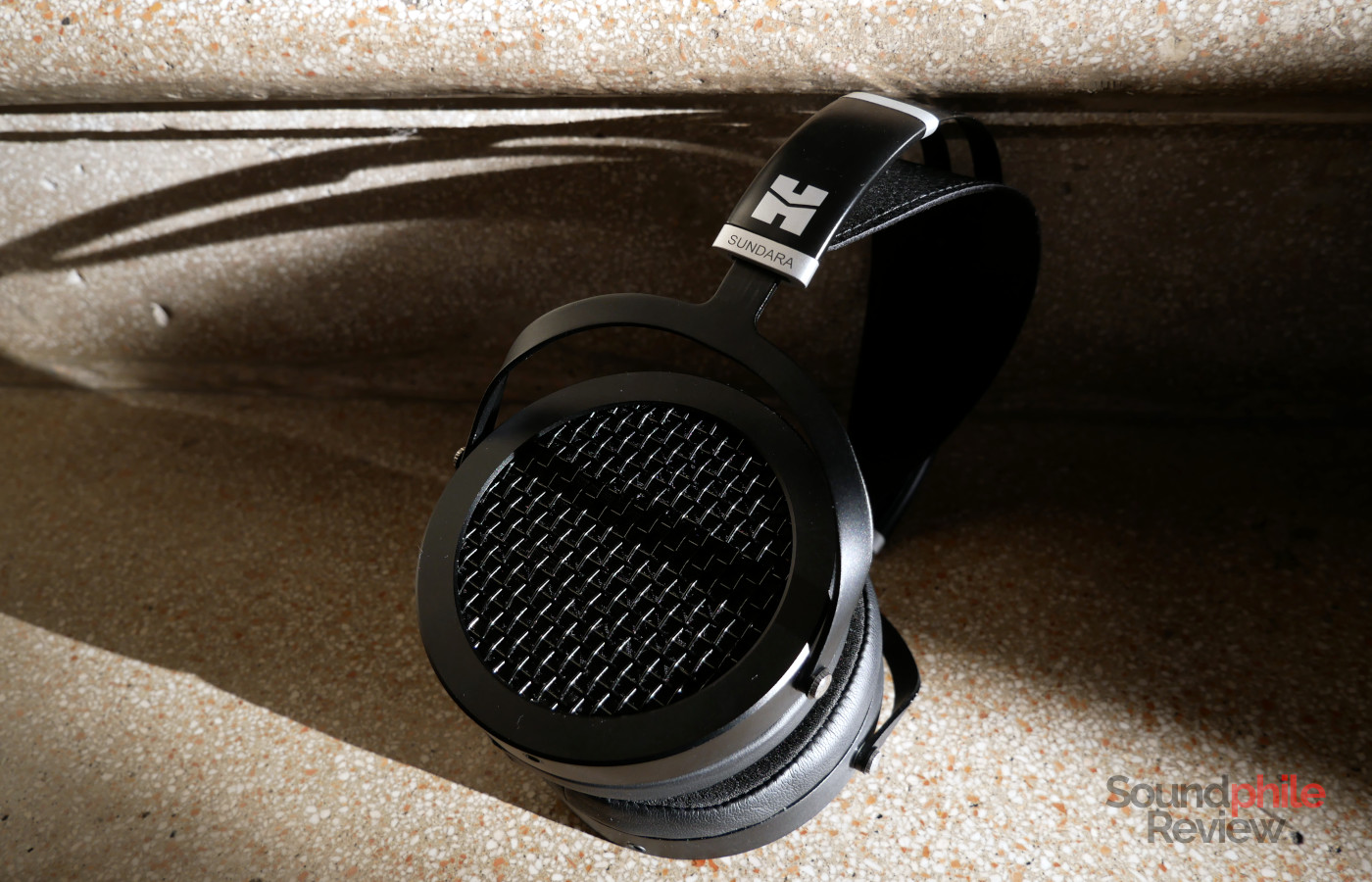


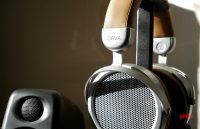
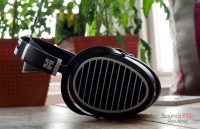
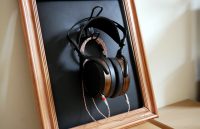


Sundara’s Soundstage, Imagining are deal killers for me. I really like your reviews. I would like to be able to ask your adivce. I am very isolated and can not travel due to the china virus. I am in the market for new Headphones and Earphones.